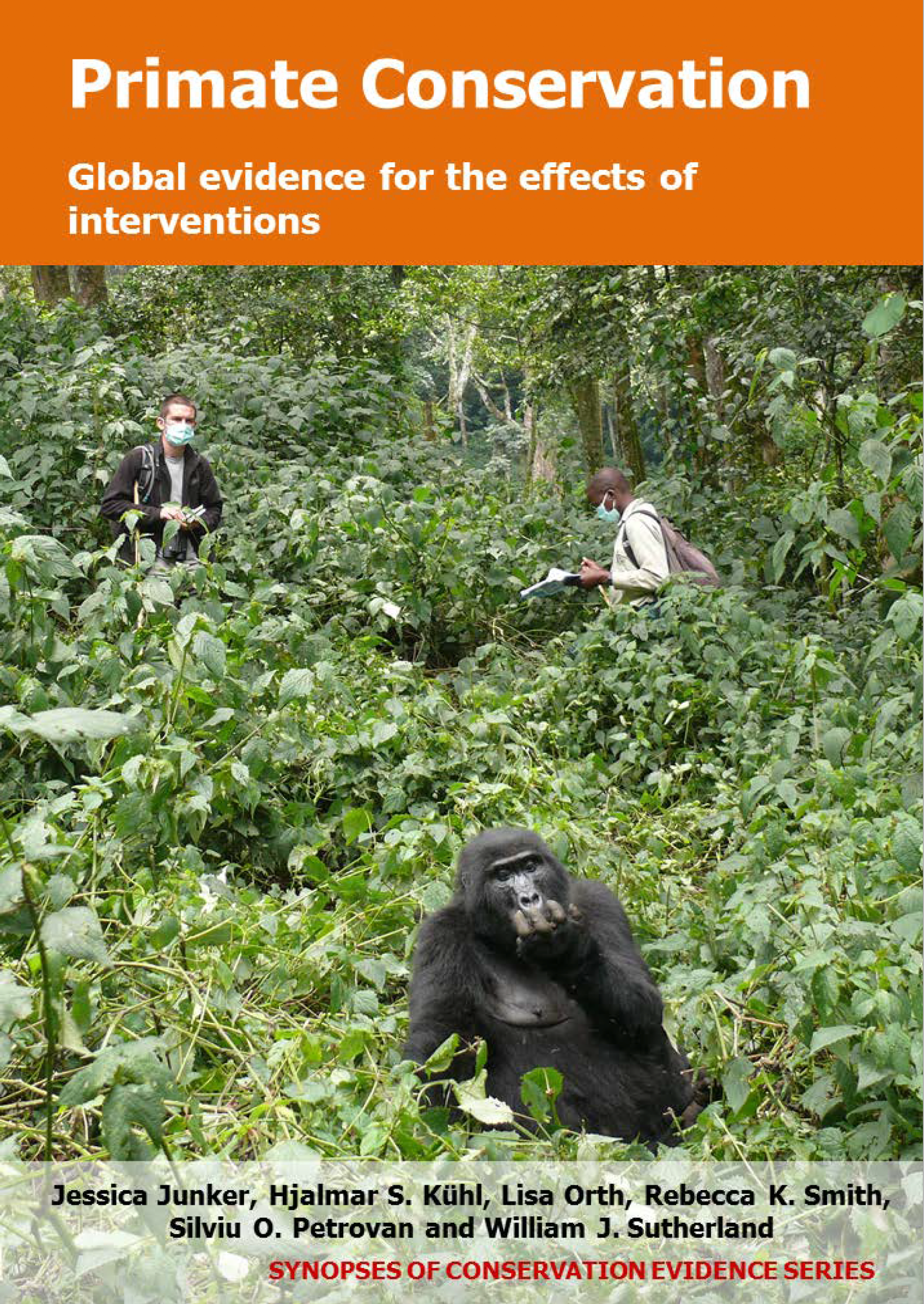Install rope or pole (canopy) bridges
-
Overall effectiveness category Likely to be beneficial
-
Number of studies: 3
View assessment score
Hide assessment score
How is the evidence assessed?
-
Effectiveness
50% -
Certainty
50% -
Harms
0%
Study locations
Supporting evidence from individual studies
A study in 1991-1994 in an Atlantic coastal forest in São Paulo State, Brazil found that black lion tamarins Leontopithecus chrysopygus and tufted capuchins Cebus apella used a pole bridge to cross a service road on at least 40 occasions over 3.5 years. From the installation of the bridge in 1991 to the end of 1994, two groups of black lion tamarins and one large group of capuchins were recorded using the bridge on at least 40 occasions. The authors suggested that the groups may have used the bridge regularly, possibly daily. The bridge was installed exactly where black lion tamarins had been observed crossing the road during a long-term primate study that was conducted in the area before. The bridge was 8 m wide and 6 m high and connected naturally forested habitat on both sides of the road.
Study and other actions testedA before-and-after trial in 1985-1998 in secondary riparian forest in the Community Baboon Sanctuary, Belize found black howler monkey Alouatta pigra numbers increased by 138% over 13 years after the construction of pole bridges over man-made gaps, alongside ten other interventions. The population increased from 840 to more than 2,000 individuals (138% increase). No statistical tests were carried out to determine whether this difference was significant. Additional interventions included the protection of the sanctuary by the communities surrounding it, preserving forest buffer strips along property boundaries, preserving a forest corridor along the river, preserving important howler monkey food trees in large clearings, involving local communities in the management of the sanctuary, creating a museum for education purposes, implementing an eco-tourism and research programme, presence of permanent staff, and monetary (income from employment, tourism and craft industries) benefits to local communities for sustainably managing their forest and its wildlife communities. The study does not distinguish between the effects of the different interventions mentioned above.
Study and other actions testedA before-and-after trial in 2009-2010 at the Ambatovy mine in humid forest in Toamasina, Madagascar found that all six lemur species (Lemuroidea) monitored used canopy bridges to cross roads and pipelines around the mining area. Observed road crossings on the ground decreased from 69 during two weeks before bridge construction to six crossings during the 1.5 years after construction. Furthermore, bridges were used 63 times during the first 1.5 years. Lemurs preferred to use the mine area bridge, which the authors assumed was due to the shorter distance needed to be crossed without the shelter of the canopy. Three bridges (8–15 m in length) in the mine area and four (22-25 m in length) along the pipelines were constructed from January to February 2009. Lemur (eastern woolly lemur Avahi laniger, greater dwarf lemur Cheirogaleus major, grey bamboo lemur Hapalemur griseus, diademed sifaka Propithecus diadema, brown lemur Eulemur fulvus, red-bellied lemur Eulemur rubriventer) use of bridges was monitored 10 hours/day during four to six days/week from March 2009 until August 2010. Prior to bridge construction, mine area roads and pipelines were monitored for 14 days to detect potential crossing points.
Study and other actions tested
Where has this evidence come from?
List of journals searched by synopsis
All the journals searched for all synopses
This Action forms part of the Action Synopsis:
Primate Conservation
Primate Conservation - Published 2017
Primate Synopsis





)_2023.JPG)














